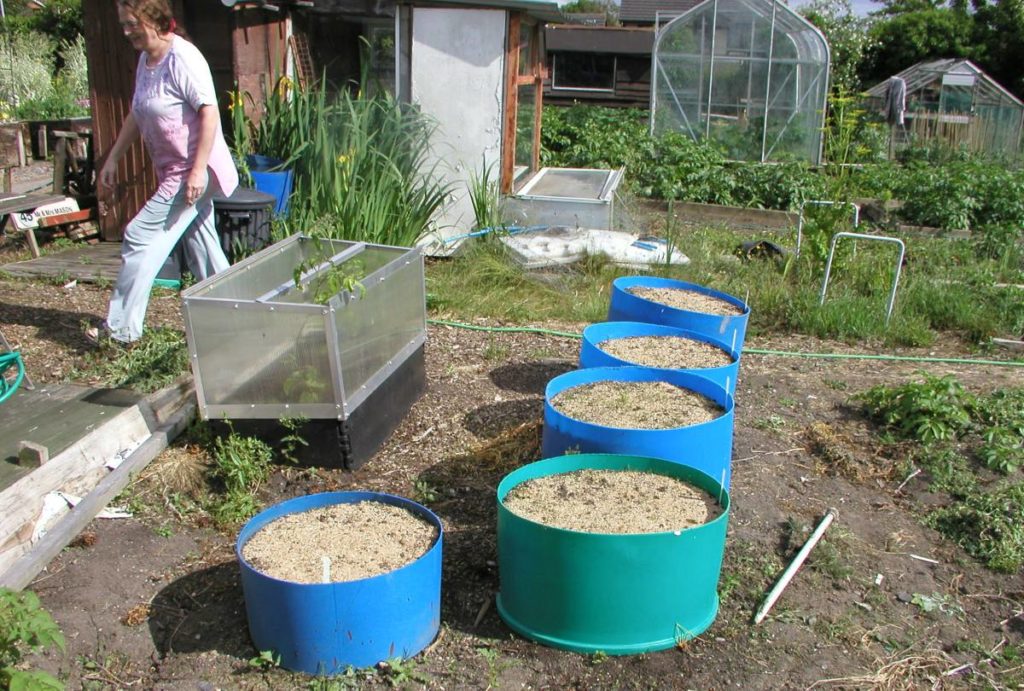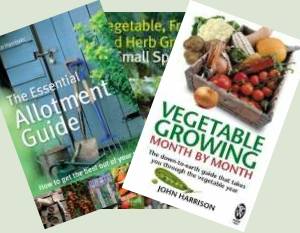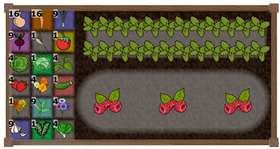After getting my new Mantis on Friday, I was looking forward to giving it a really good workout on Saturday but fate intervened as it does. We got a call from the estate agent that we had a house viewing on Saturday so it was run around and tidy up – despite the place being spookily tidy already.
By the time they’d been round and we’d had a cuppa to recover it was late afternoon. So down to the plot where I put in a couple of hours.
Crop Rotation
I’m not growing any parsnips this year so my barrels are all devoted to carrots. Now growing the same thing in the same soil for year after year is not a good idea. It encourages the build up of pests and disease whilst the soil is depleted of precisely the nutrients the particular crop requires.
This is why crop rotation is so important, whether you’re growing organically or not. Interestingly, there is one exception to rotation. Legumes (the peas and beans) germinate better in soil that has had beans growing in it.
The practice of growing runner beans in the same place every year does encourage good germination. However, the chances are there will be a problem build up leading to a sudden failure one year. It could be 5 years before the problem hits or even more, but eventually it catches up.
One trick if you’re getting poor germination with beans is to add some soil from the previous year’s bean patch to compost and start them off in pots.
Back to my carrot barrels.
The show growers always use barrels of sand with cylinders of fine compost in to encourage long straight growth. I’m not after show specimens, so just settle for a mix of multi-purpose compost and sand. Roughly 1 part sand to 4 parts compost and a couple of parts of sieved soil to add body.
It’s a bit of a fuss, but we get enough carrots for us from very little space. I’m not using full height barrels, these are bottomless cylinders cut from barrels about 18″ (45cm) high.
Carrot Root Fly
I’ve heard it said that the carrot root fly is unable to fly above a few inches high but then I’ve heard they mate at 9 feet high and some show growers have said they’ve had problems in tall barrels – so don’t think of this method as protection against the fly. Use a fleece to keep the wee beasties off if they’re a problem in your area.
Preparing and Sowing the Carrots
After weeding the barrels, it’s amazing how quickly weeds arrive, I took out the top six inches of the compost / sand mix and replaced with fresh to which I added a little fish, blood & bone fertiliser. They don’t need a lot of nutrients, but this general fertiliser will give them a boost.
A good watering to make sure the compost was wet through and then scattered the seeds thinly over the surface. I’m growing just two types. Maestro from Suttons which is disease and carrot fly resistant and Touchon which is an heirloom Nantes type of carrot we pick up when we visit France. It’s easy to grow and gives nicely shaped tubes about 6″ (15cm) long.
Then a light dusting of damp sand to hold the seeds in place and that’s it, apart from watering if need be, until I thin them out.





Hi with regards to crop rotation, one of our neighbours at our allotment plants the same things in the same place on the same date as his mum and dad used to, when they had it. He’s been there 25 years and still manages to get a bumper crop every year. We don’t know how!! We, however, change it every year and have had some failures, but part of the fun of gardening
The carrots I am growing have good tops but the carrots are short stubby and twisted, what is causing this and how do I solve the problem. Thank you.
Dennis
My radish have similar problem to the carrots planted by Dennis Hyman above. The radishes have lush foliage top but thin, small tuber. My peat soil is loose and have good drainage. I used goat manure to fertilize the radishes.
Any advice would be appreciated.
Alakazaam! Information found, problem solved, thanks!
hi – how do you keep the barrels watered? from the top eg fine sprinkle watering can or from the bottom sat in a tray?
TIA
I water from the top. The barrel slices are just set on the ground.
Hi davidj -I water from the top. The barrel slices are just set on the ground.
Can I grow carrots in metal oil drum ?
So long as they’re clean – i.e. no oil left in them.